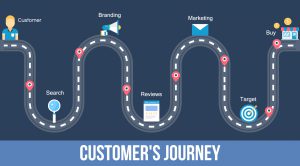Journey mapping is an excellent tool that organizations can leverage to depict customer experience. The goal of journey mapping is to learn what customers care about the most – from initial product awareness, all the way through renewal or repurchase. A key component of building a journey map is using employees and internal teams to think like customers and detail out the important aspects of the customer journey.
However, this exercise should not be 100% company-centric. In fact, without enough outside perspective – either from an objective facilitator or reliable voice of the customer—journey maps can easily become nothing more than process maps that document steps with little emotional insight into customer pain points, frustrations, gaps in service or moments of truth.
Process Maps vs. Journey Maps
Process maps are meant to clearly lay out processes and procedures that work best for a company. A process map can provide an organization with a tremendous amount of value as a means for ensuring that processes are carried out consistently by employees. However, a process map is truly an internally-focused tool and at its core a documentation exercise.

Journey maps, on the other hand, are depictions of customer interactions viewed through the customer’s eyes. Mapping the customer journey should include identification of the stages that are most critical to customers and the emotions that customers are feeling along the journey. A process map rarely delivers on these critical elements.

Avoiding a Process Map
The good news is that companies can avoid producing a process map if their ultimate goal is to depict the customer journey. To create a map that accurately reflects the customer’s journey, mappers need to be prepared to step outside of their normal roles and include voice of the customer in the process.
- Use a neutral facilitator: Expert facilitation of a journey map project is critical to ensuring the right inputs that will result in a true depiction of the customer journey. Leverage a facilitator who brings neutrality or an outside perspective to the project, ensuring that all aspects of the customer journey are considered. This helps avoid putting too much emphasis on the company-centric view of customer experience.
- Talk to customers: It seems obvious, but far too often companies neglect to bring customers into the journey map process. Speaking with customers at the beginning, middle and end of a journey map project are great ways to keep the project on track and to keep the customer perspective front and center.
Want to Learn More?
If you are interested in learning more about journey mapping – and the detours you should avoid – check out this set of resources. And, check out The CX Leader Podcast, where we talk about journey mapping in more detail.

